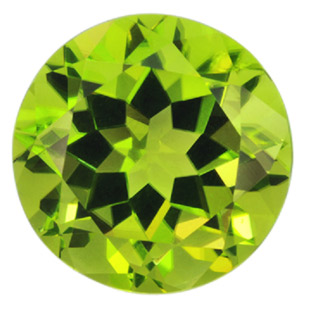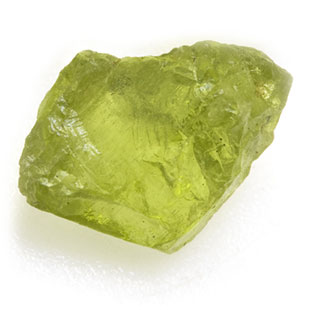Peridot Guide
Buying tips, facts & history
Colour
Green
Our Source
Worldwide
Mineral class
Olivine
Hardness
6.5 – 7 Mohs Scale
Birthstone month
August
Wedding anniversaries
16th
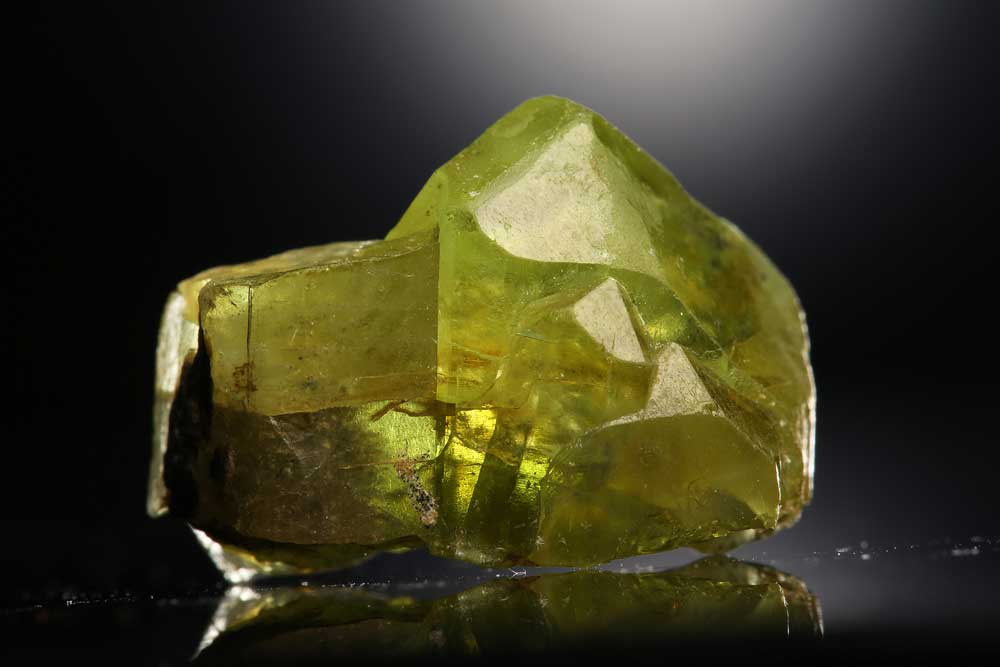
Hard Facts
Peridot is a gemstone that displays unique colour. Formed from a silicate mineral called olivine, it contains iron trace elements which give it a distinctive bottle-green pigmentation. Depending on the amount of iron present in the crystal, peridot shades can ranges from sparkly citrus green to intense olive green.
One of the most stunning features of peridot is that it exhibits high double refraction. Double refraction is when light passes through the gem, and then bends and splits in two. This gives peridot amazing fire. It’s a gemstone that doesn’t darken when the night falls, its glow can be seen even in low light.
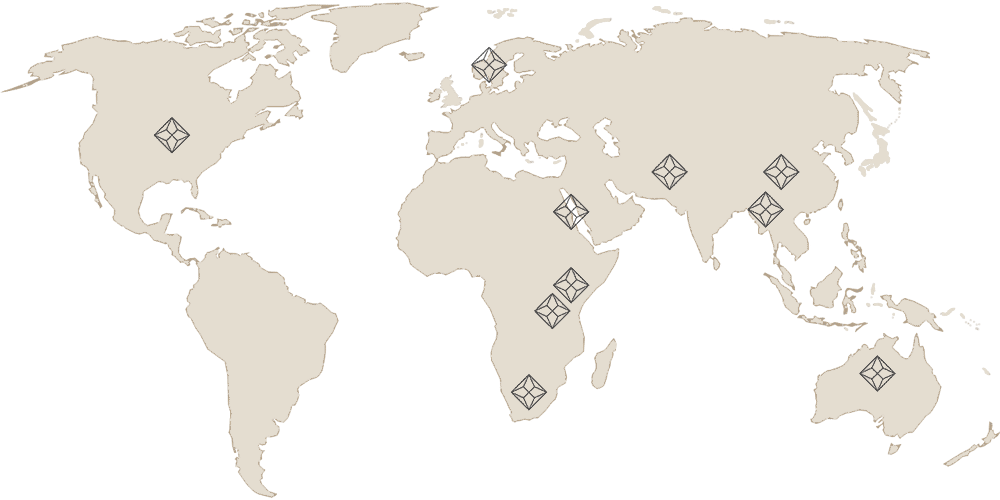
Where on Earth?
Peridot is found in the earth’s upper mantle, in lava deposits, or at meteorite crash sites. It occurs all over the world, including USA, Tanzania, Kenya, South Africa, Australia, China, Pakistan, Myanmar and Norway. It is also still produced on the very same island where the ancient Egyptians first mined it: the island of Topazios, now known as St. John’s Island, or Zabargad in Arabic.
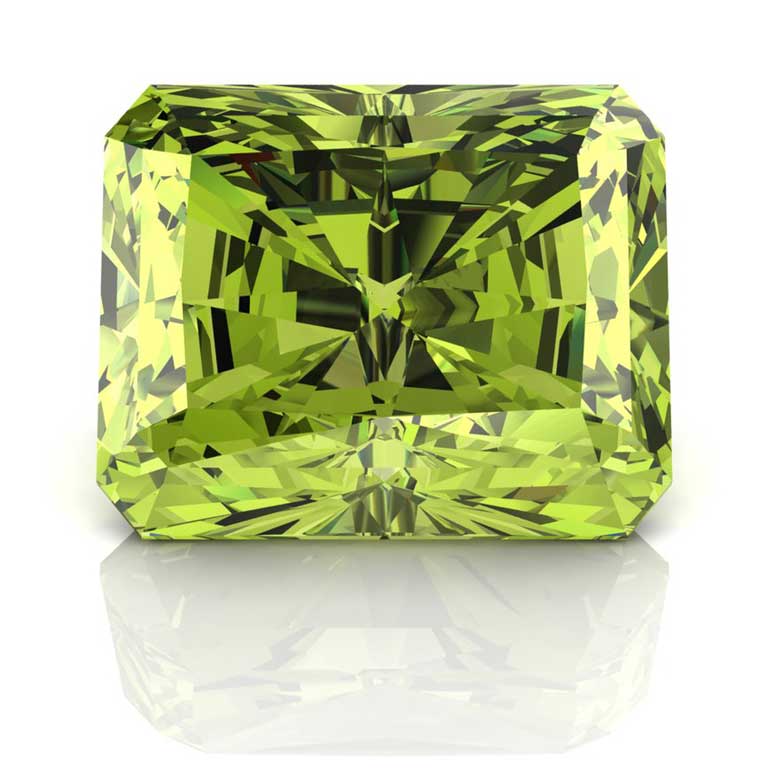
Birthstone and Anniversary
Peridot is August’s birthstone. Additionally it is the traditional anniversary gem gift for 16th anniversaries. Peridot stands for clear thinking and symbolises light. In ancient times, it was believed that peridot’s bright sparkle could ward off evil during the night.
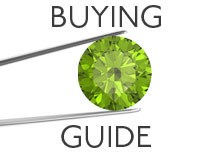
Buying Guide
How to assess a Peridot’s quality and value?
Peridot is found all over the world as exceptionally clear crystals. This makes it a beautiful and relatively inexpensive gem, perfect for use in jewellery. The carat price of the purest olive green peridot can be high, but commercial quality peridot still looks incredibly sparkly, eye clean and very attractive. Our gemmologist evaluates peridot in the same way as other gemstones, by its colour, clarity, cut and carat weight.
COLOUR
Most commercially mined peridot is yellow-green, although the gem can appear in a range of shades, from grass green to dark olive green. Peridot should not appear brown, as that lowers its value considerably.
CARAT
Thanks to its clarity and vivid sparkle, peridot lends itself well to both small and large jewellery items. Carvings and works of art often exhibit jewels of more than 100 carats. Smaller peridot gems used in jewellery are very affordable, but prices begin to rise when the gem weighs more than 3 carats.
CLARITY
Most gem quality peridot is translucent and looks clean to the unaided eye. When looked at with a jeweller’s loupe, peridot crystals may appear to have tiny black natural inclusions inside. These are perfectly acceptable in jewellery, as long as they can only be seen with magnification.
CUT
Peridot can be cut into many different shapes, including oval, cushion and emerald cuts. Creative designer cuts, carvings, as well as smooth dome-shaped cabochons and beads are also popular.
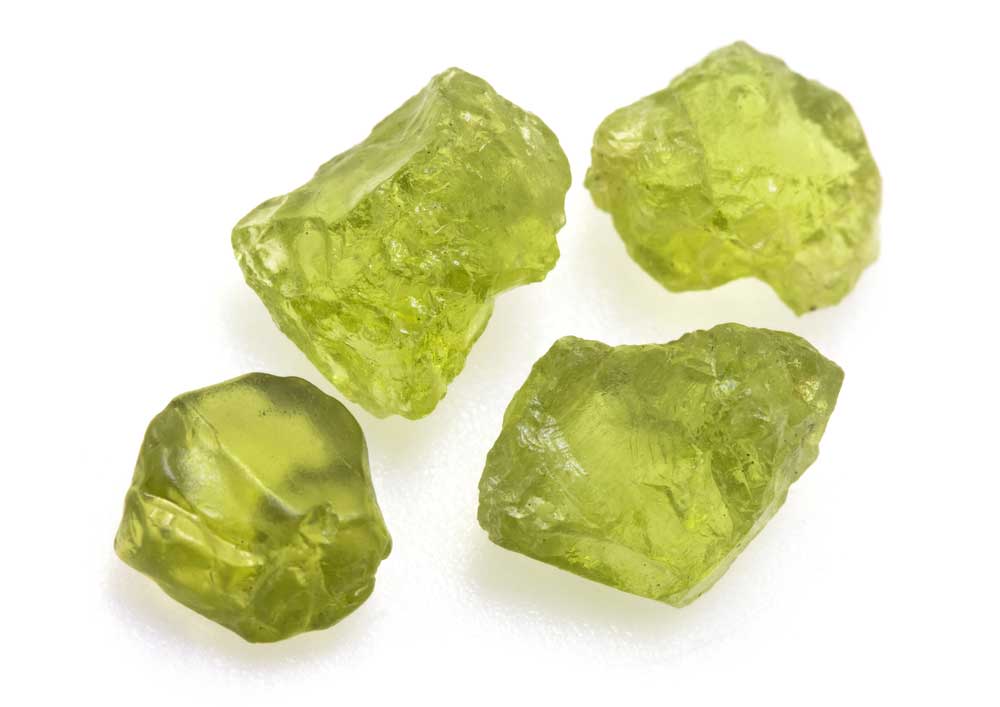
Natural or Treated?
Peridot doesn’t usually need any enhancement to look beautiful. But like with all gemstones, treated peridot and even imitations are sometimes sold. For example, lighter coloured peridot gems may be given a special coating to make them look greener or to stabilise natural fissures. Our gemmologist recommends buying peridot that hasn’t been treated in any way. Always buy peridot jewellery from a trusted retailer that declares any treatments given to gems. That way you can rest assured you’re buying peridot at its real value.
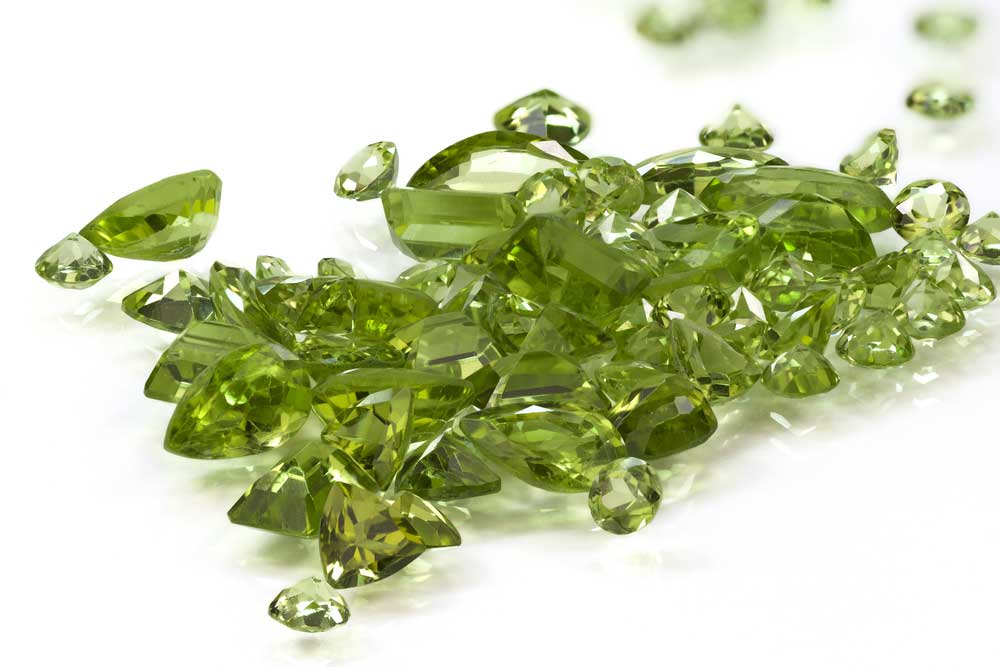
Care and Cleaning
Peridot is a gem of above-medium hardness. It ranks 6.5 – 7 out of 10 on the Mohs Scale of mineral hardness. This means that while peridot is fairly hard, and is well suited to use in jewellery, you do have to take a little extra care so you don’t scratch it. It can also be susceptible to pressure and extreme temperatures, so avoid ultrasonic jewellery cleaners and sudden changes of temperature. To clean your peridot jewellery, wash it gently in warm, soapy water using a soft toothbrush and pat dry with a clean cloth.

Modern History
Peridot has earned itself a reputation as the “extraterrestrial” gemstone. In 2006, NASA’s explorer spacecraft, Stardust, returned to earth with mineral samples gathered from near the sun. Among other particles, they found gem-quality peridot, thought to be as old as our solar system. On Earth, peridot is also frequently found in meteor craters.
Radiant, green peridot is currently much-loved in the world of high fashion. With modern style icons like the Duchess of Cambridge, Helen Mirren, Jennifer Lopez and Anna Wintour favouring its luxurious green sparkle on the red carpet, it has gained more fame in the last decade than ever before.
Finally, peridot has a strong link to feminism, because the Suffragettes used it in their outfits as a symbol of change and hope.

Famous Peridots
In Cologne, Germany, stands the impressive Cathedral of Saint Peter and Mary. The most famous piece of art inside it is The Shrine of the Three Kings, adorned with gold and more than 1,000 gemstones. For several centuries it was thought that the large green jewels decorating the shrine were emeralds. But they are, in fact, impressive 200-carat peridots!
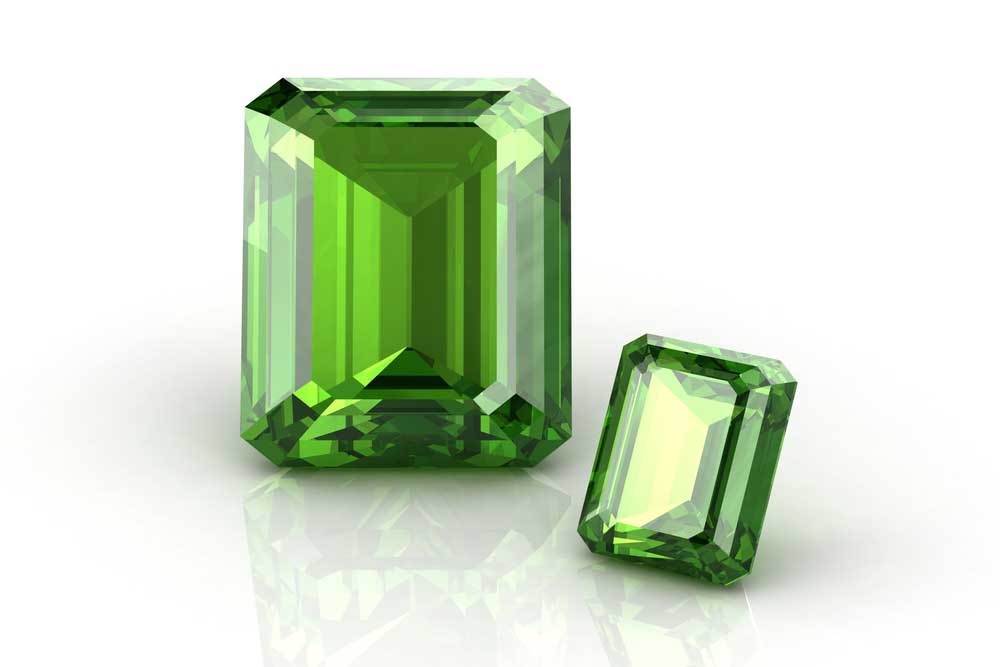
Legend & Lore
For more than two millennia, peridot has been associated with light. It’s believed that the Egyptians were the first people to mine this golden-green gem on the volcanic Red Sea island of Topazios. According to legend, the island was infested with dangerous snakes, but the Egyptians drove them into the sea in order to mine the hidden treasure. The ancient Egyptians called peridot “the sun gem”, believing it had fallen down from the skies.
